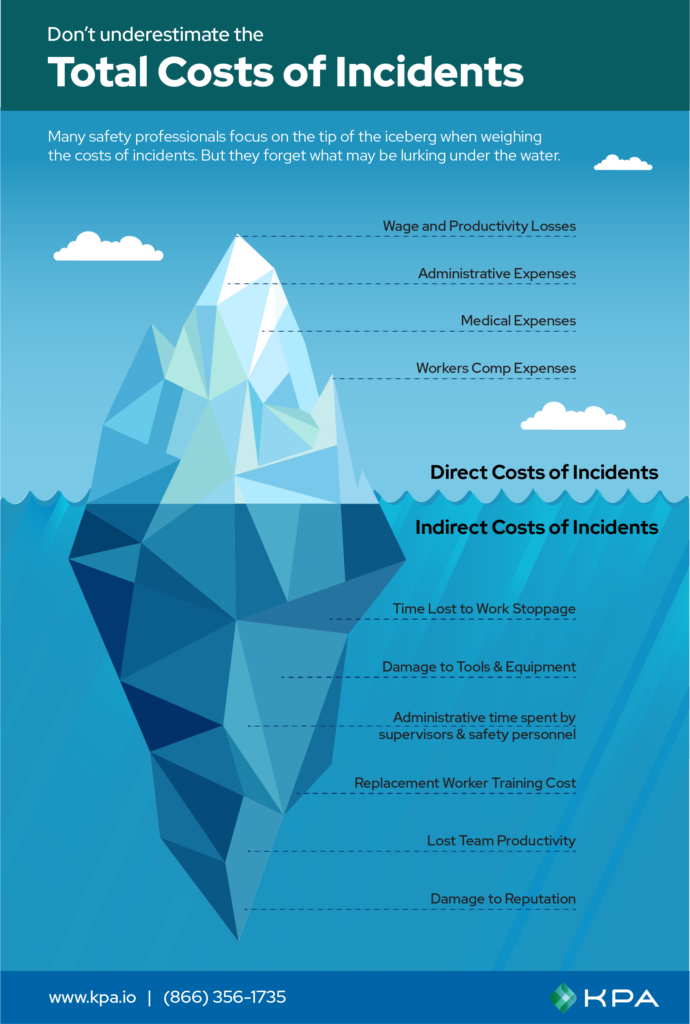When looking at incidents and injuries, it’s easy to go the way of the Titanic…considering only the direct costs that can impact your business. But like an iceberg, there’s a whole host of costs under the surface that can eat away at your bottom line too.
Let’s take a look…

There are two places I like to go to get data on this topic. NSC’s Injury Facts lets you dive into all kinds of data around contributing costs. And we’re written before about OSHA’s Safety Pays calculator.
While digging into the fine print on the Safety Pays site, I ran across some eye-popping data. Check out the ratio between direct and indirect cost:
“$afety Pays” uses the sliding scale table below to calculate the indirect costs of the injuries and illness.
According to OSHA, “The less serious the injury the higher the ratio of indirect costs to direct costs. While they may account for the majority of the true costs of an accident, indirect costs are usually uninsured and therefore, unrecoverable. The indirect cost multipliers used in $afety Pays are general estimates based on the limited research on this issue. The indirect cost multiplier will vary depending on an employer’s unique circumstances.
These estimates include the following kinds of indirect costs:
- Any wages paid to injured workers for absences not covered by workers’ compensation;
- The wage costs related to time lost through work stoppage associated with the worker injury;
- The overtime costs necessitated by the injury;
- Administrative time spent by supervisors, safety personnel, and clerical workers after an injury;
- Training costs for a replacement worker;
- Lost productivity related to work rescheduling, new employee learning curves, and accommodation of injured employees; and
- Clean-up, repair, and replacement costs of damaged material, machinery, and property.
Some of the possible kinds of indirect costs not included in these estimates are:
- The costs of OSHA fines and any associated legal action;
- Third-party liability and legal costs;
- Worker pain and suffering; and
- Loss of good will from bad publicity.”
Thinking through costs is an important step when establishing your safety program budget.
But let’s make sure you’re not just skimming the surface.
KPA Can Help You Sell Safety to Your CFO
Looking for hard evidence of the business value of EHS software? Want an industry pro on your side as you make your case? KPA has the data, case studies, and expertise you need to speak fluent CFO. Ask us how we can help.
